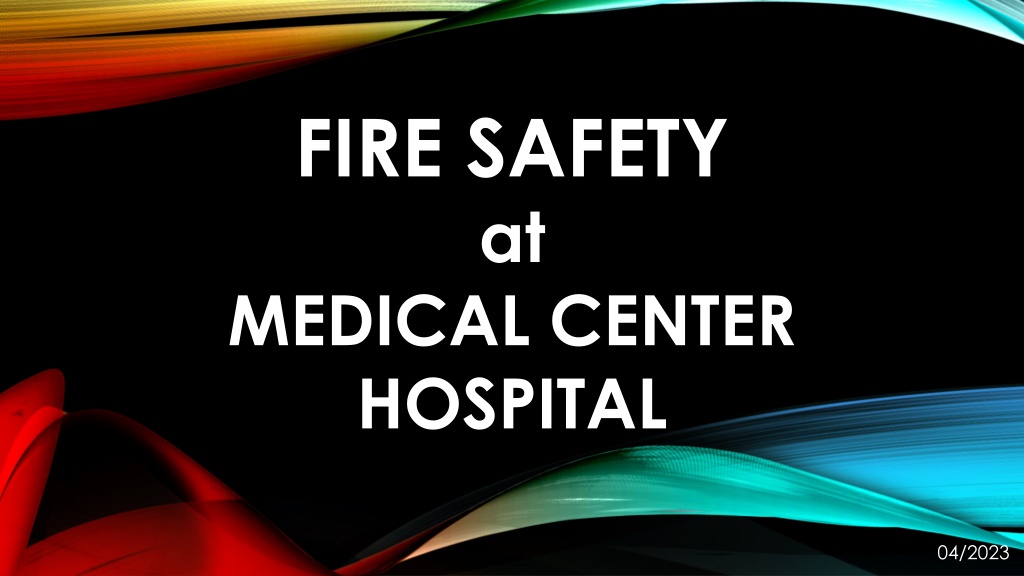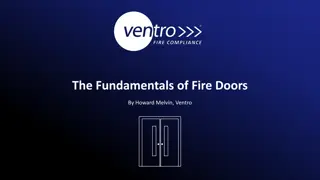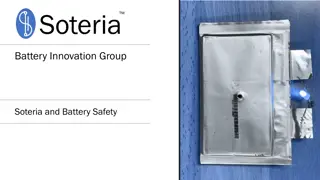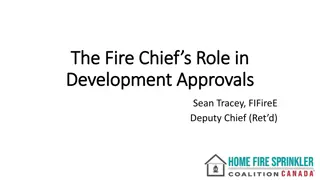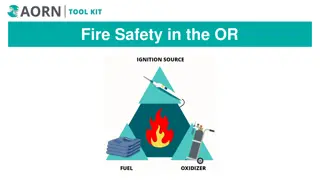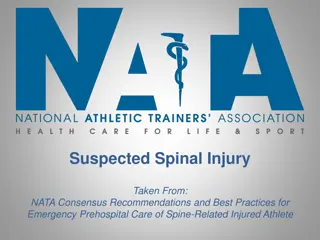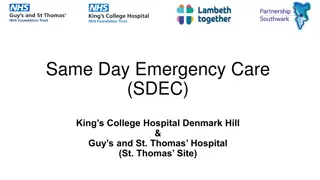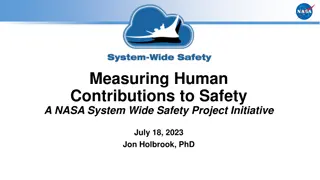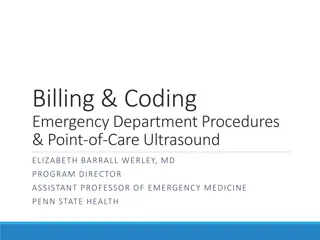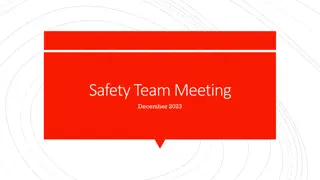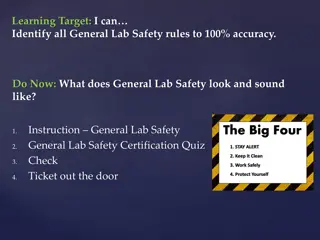Fire Safety Procedures in a Medical Center Hospital
In case of a fire emergency at the medical center hospital, follow the R.A.C.E. protocol - Rescue people in danger, Activate alarms, Confine the area, and Extinguish the fire using the P.A.S.S. technique. Different classes of fire and types of extinguishers are identified, along with directions on who responds and additional safety measures. Reassure patients and visitors, remain calm during emergencies, and follow the established procedures for a safe evacuation.
Download Presentation
Please find below an Image/Link to download the presentation.
The content on the website is provided AS IS for your information and personal use only. It may not be sold, licensed, or shared on other websites without obtaining consent from the author. Download presentation by click this link. If you encounter any issues during the download, it is possible that the publisher has removed the file from their server.
Presentation Transcript
FIRE SAFETY at MEDICAL CENTER HOSPITAL 04/2023
ACTIVATION If you see smoke or fire: dial 2000 and state fire and the location. You may also activate the fire alarm system by pulling a pull station located at designated exits. If you smell something burning, but do not see smoke: Call Customer Service at ext. 2000 and report the situation. Plant Operations will respond to investigate, and will activate the building fire alarm system, if necessary. PBX will announce Facility Alert + Fire Alarm Activation + Location along with the message activate R.A.C.E. procedure. Everbridge alert will be sent to the overhead announcement, screen takeover, and predesignated personnel.
WHO RESPONDS Engineering Police/Security Any other available staff may also respond
RESPONSE Smoke or fire sighted: R A C E R Rescue/Remove People Remove anyone who is in immediate danger. A Alarm Activation Activate the fire pull station/call 2000. C Confine/Contain the Area Close doors. Remove items from the corridor or move to one side in the event of an evacuation. E Extinguish If safe, extinguish the fire using the fire extinguisher. Use the P.A.S.S. technique to operate the extinguisher: P Pull the pin. A Aim at the base of the fire. S Squeeze the trigger. S Sweep from side to side. Remain alert for further instruction or All Clear .
R.A.C.E Rescue Alarm Confine Extinguish P.A.S.S DO NOT BLOCK Pull stations Fire Extinguishers Smoke doors Pull the pin Aim at the base of fire Squeeze handle Sweep side to side CALL EXTENTION 2000 for ALL EMERGENCIES 5
Classes of Fire: Class A- Ordinary combustibles such as wood, paper, and trash Class B- Flammable liquids such as gasoline, oil, and alcohol Class C- Electrical equipment such as wiring and appliances Types of Extinguishers: ABC- Dry Chemical BC- Carbon Dioxide MAKE SURE THAT YOU USE THE APPROPRIATE EXTINGUISHER IN THE MRI AREA!!!
ADDITIONAL INFORMATION Reassure patients, families, and visitors that they are aware of the fire and that the organization has a response plan in effect. Remain calm, fear and panic associated with smoke cause more deaths and serious injury than actual contact with flames. In severe smoke, put a wet towel over your nose and mouth; keeping as close to the floor as possible. DO NOT return to the affected area after evacuation. There is a fire extinguisher simulator in the Safety Department, if you would like to go through the motions of extinguishing a fire, call ext. 1101 to set up some time. For more information, please refer to policy MCH 4050 Fire Alarm Activation General instructions for all employees including volunteers, LIPs, and students: Keep telephone lines clear during the disaster for fire control. Do not use elevators. Make sure all fire, corridor, and room doors are closed. Clear all corridors and exits of unnecessary traffic and obstructions. If the strobe notification lights, the audible tones, or any of the doors close automatically in your department, you are to: Close all the patient doors Gather at the nurse s station Monitor overhead alerts for more information Prepare to receive patients from the affected areas. This is regardless of it the overhead announcement states a floor that is not adjacent, below, or above. The fire may spread, and the overhead can only announce one department at a time.
